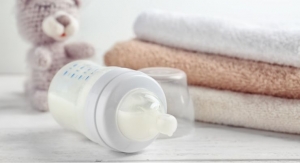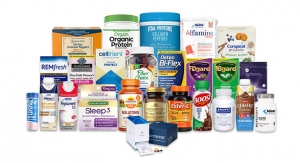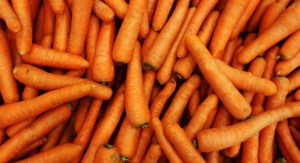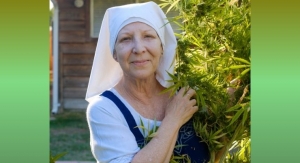Paul Altaffer & Grant Washington-Smith10.01.09
In the July/August edition of Nutraceuticals World, this column introduced the concept of regional branding for natural products as a way to increase profits through product differentiation in a competitive market. For foods and beverages in particular, consumer interaction with a brand is immediate upon consumption, which reinforces the regional brand perceptions. For example, to many consumers a Napa Valley wine or a fresh Florida orange tastes better than an unknown imported variety, thus making the regional brand a symbol of quality. In the last column, we explained that for dietary supplements and functional foods, the primary selling point is the health benefit provided to the consumer, but that unlike food and beverage the lack of immediate feedback to the consumer makes it difficult to develop a reasonable branding proposition for a regional brand.
New Zealand has worked hard to develop a regional branding strategy for agricultural export crops, dairy and tourism. Its competitive position in the global economy has been based on a regional differentiation strategy around an image of being "clean and green," which is particularly important for the export of fresh seasonal fruits and vegetables. This "clean and green" differentiation strategy, however, is vulnerable to being challenged by other overseas competitors. But New Zealand has another unique point of difference: plants grown there for use in functional foods and nutraceuticals have higher levels of biologically active and beneficial compounds compared to the same cultivars grown in other regions of the world.
New Zealand is exposed to higher levels of UV radiation compared to countries of similar latitude. It is known that certain plants, particularly those relevant to the human food supply, respond to elevated levels of UV-B light by increasing the production of secondary metabolites. This is part of the plant's stress response to UV-B light, and acts to protect the plant from further UV radiation and to repair the damage that has already been done from UV-B exposure.
Currently, research is being planned to examine the link between the ozone depletion in the atmosphere above New Zealand, the increase UV-B light associated with the ozone depletion, and the corresponding impact on the phytonutrient profile in New Zealand's plants. According to researchers involved in this project, the plan is to develop a technology platform and methodology that will enable the identification of several existing New Zealand grown fruit and plant crops that exhibit elevated biologically active and beneficial compounds as a result of this UV-B response.
"This process creates a unique competitive position for New Zealand growers and in the future could represent a great opportunity to brand our fruits and vegetables as having a superior phytonutrient profile," said Dr. Rod Claycomb. "We have already seen evidence of this effect through anecdote and observation-from high isoflavone red clover developed and grown in New Zealand but doesn't express these isoflavone levels when the same seed was grown in North America. Kiwifruit and sweet cherry appear to have a 40-60% increase in total polyphenol values when compared to exactly the same cultivars grown in California."
In the last column we suggested that for a regional brand to be effective for natural products, it had to be grounded in solid science (this contrasts with a food and beverage regional brand, where the quality is linked to taste). In the New Zealand situation, the science is about to be tested. If the results do support the hypothesis-that New Zealand's unique atmospheric conditions result in a UV-enhanced phytonutrient profile for much of its phytonutrient crops and the subsequent health benefits can be demonstrated-then this will be the basis of building a strong regional brand strategy. This brand strategy should be stronger than simply relying on country of origin labeling (COOL). The brand should support the unique consumer benefit, and it should represent and stand as a symbol of quality. Additionally, a regional brand should support the consumer need for better knowledge around origin and source, which includes issues of traceability and sustainability.
Regional brand strategist David Fulwood (and the 2006 Australian Nuffield Scholar) has undertaken extensive research and believes that regional brands work best where:
� The production area has a naturally occurring physical boundary, for example an island or valley
� The production region is environmentally clean
� The product is produced in a traditional way
� The quantity produced is naturally limited, for example by productive land area
� The brand is easy for consumers to recognize
� The product provides a credible benefit and will fulfill its promise to the consumer
� Functional or emotional attributes can be associated with the brand
� Consumers can expect a satisfying experience from the product as well as some benefit being given back to the region through their purchase.
The failure of some regional branding strategies can also provide useful insights. Washington State is an example of a grower region that attempted a regional brand strategy with limited success.
While many U.S. states grow apples, Washington State produces more than half of the apples in the country. As a result, Washington state apple growers have historically used promotional activities to inform consumers of the distinguishing characteristics of their product. In an attempt to consolidate its marketing strategy and achieve premium pricing, the Washington apple producers established a "single desk" marketing board called the Washington Apple Commission (WAC). This producer board has invested hundreds of millions of dollars during the past couple decades into research and marketing, all in an attempt to preserve the state's reputation for quality apple production.
The WAC and the Washington State apple growers, however, have not been able to maintain coordination over funding for those activities. Most notably, organic apple growers and specialty cultivar growers have successfully sued to allow them to opt out of generic advertising efforts, severely restricting the activities of the WAC. These growers felt that Washington state's apple brand was/is too generic and doesn't support the range of unique specialty cultivars grown in the state. Instead, these breakaway growers believe they can capture price premiums above and beyond that developed by WAC and afforded by their regional brand.
Without the ability to mandate a quality standard over regional growers or restrict the resource, Washington apple growers are not in a position to follow the strategy of limiting supply or restricting entry. Therefore they are unable to maintain price premiums. As a consequence, the apple growers of Washington State are too diverse to have either the means or inclination to control supply, to raise prices over marginal cost.
This example highlights some of the inherent difficulties in establishing a regional brand and the misconception that a regional brand is simply just a geographical indicator. In terms of New Zealand's regional branding strategy for plants with UV-enhanced phytonutrient profiles, it will require both substantiation of the science and certification before such a brand strategy could provide a credible benefit and fulfill the brand promise to the consumer.
New Zealand has worked hard to develop a regional branding strategy for agricultural export crops, dairy and tourism. Its competitive position in the global economy has been based on a regional differentiation strategy around an image of being "clean and green," which is particularly important for the export of fresh seasonal fruits and vegetables. This "clean and green" differentiation strategy, however, is vulnerable to being challenged by other overseas competitors. But New Zealand has another unique point of difference: plants grown there for use in functional foods and nutraceuticals have higher levels of biologically active and beneficial compounds compared to the same cultivars grown in other regions of the world.
When UV Radiation is Good for Health
New Zealand is exposed to higher levels of UV radiation compared to countries of similar latitude. It is known that certain plants, particularly those relevant to the human food supply, respond to elevated levels of UV-B light by increasing the production of secondary metabolites. This is part of the plant's stress response to UV-B light, and acts to protect the plant from further UV radiation and to repair the damage that has already been done from UV-B exposure.
Currently, research is being planned to examine the link between the ozone depletion in the atmosphere above New Zealand, the increase UV-B light associated with the ozone depletion, and the corresponding impact on the phytonutrient profile in New Zealand's plants. According to researchers involved in this project, the plan is to develop a technology platform and methodology that will enable the identification of several existing New Zealand grown fruit and plant crops that exhibit elevated biologically active and beneficial compounds as a result of this UV-B response.
"This process creates a unique competitive position for New Zealand growers and in the future could represent a great opportunity to brand our fruits and vegetables as having a superior phytonutrient profile," said Dr. Rod Claycomb. "We have already seen evidence of this effect through anecdote and observation-from high isoflavone red clover developed and grown in New Zealand but doesn't express these isoflavone levels when the same seed was grown in North America. Kiwifruit and sweet cherry appear to have a 40-60% increase in total polyphenol values when compared to exactly the same cultivars grown in California."
Regional Branding Can Be Sound Business
In the last column we suggested that for a regional brand to be effective for natural products, it had to be grounded in solid science (this contrasts with a food and beverage regional brand, where the quality is linked to taste). In the New Zealand situation, the science is about to be tested. If the results do support the hypothesis-that New Zealand's unique atmospheric conditions result in a UV-enhanced phytonutrient profile for much of its phytonutrient crops and the subsequent health benefits can be demonstrated-then this will be the basis of building a strong regional brand strategy. This brand strategy should be stronger than simply relying on country of origin labeling (COOL). The brand should support the unique consumer benefit, and it should represent and stand as a symbol of quality. Additionally, a regional brand should support the consumer need for better knowledge around origin and source, which includes issues of traceability and sustainability.
Regional brand strategist David Fulwood (and the 2006 Australian Nuffield Scholar) has undertaken extensive research and believes that regional brands work best where:
� The production area has a naturally occurring physical boundary, for example an island or valley
� The production region is environmentally clean
� The product is produced in a traditional way
� The quantity produced is naturally limited, for example by productive land area
� The brand is easy for consumers to recognize
� The product provides a credible benefit and will fulfill its promise to the consumer
� Functional or emotional attributes can be associated with the brand
� Consumers can expect a satisfying experience from the product as well as some benefit being given back to the region through their purchase.
Regional Branding Lessons
The failure of some regional branding strategies can also provide useful insights. Washington State is an example of a grower region that attempted a regional brand strategy with limited success.
While many U.S. states grow apples, Washington State produces more than half of the apples in the country. As a result, Washington state apple growers have historically used promotional activities to inform consumers of the distinguishing characteristics of their product. In an attempt to consolidate its marketing strategy and achieve premium pricing, the Washington apple producers established a "single desk" marketing board called the Washington Apple Commission (WAC). This producer board has invested hundreds of millions of dollars during the past couple decades into research and marketing, all in an attempt to preserve the state's reputation for quality apple production.
The WAC and the Washington State apple growers, however, have not been able to maintain coordination over funding for those activities. Most notably, organic apple growers and specialty cultivar growers have successfully sued to allow them to opt out of generic advertising efforts, severely restricting the activities of the WAC. These growers felt that Washington state's apple brand was/is too generic and doesn't support the range of unique specialty cultivars grown in the state. Instead, these breakaway growers believe they can capture price premiums above and beyond that developed by WAC and afforded by their regional brand.
Without the ability to mandate a quality standard over regional growers or restrict the resource, Washington apple growers are not in a position to follow the strategy of limiting supply or restricting entry. Therefore they are unable to maintain price premiums. As a consequence, the apple growers of Washington State are too diverse to have either the means or inclination to control supply, to raise prices over marginal cost.
This example highlights some of the inherent difficulties in establishing a regional brand and the misconception that a regional brand is simply just a geographical indicator. In terms of New Zealand's regional branding strategy for plants with UV-enhanced phytonutrient profiles, it will require both substantiation of the science and certification before such a brand strategy could provide a credible benefit and fulfill the brand promise to the consumer.



























